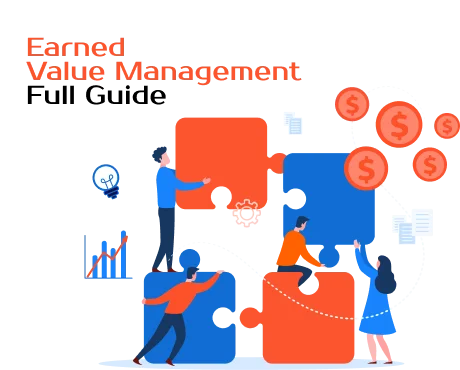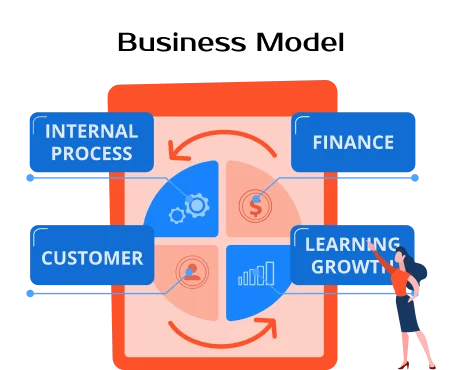Identifying Hidden Costs
Published:
July 20, 2025
.webp)
Hidden costs do not create value for the customer, do not generate direct revenue, and are often not evident in everyday operations. They arise from various factors: excessive meetings, switching between tasks, waiting for approvals, and inefficient use of human and material resources. At first glance, these costs may seem «normal», but when you calculate them, they can significantly eat into profits. So let us explore where hidden cost most often hide:
How to Identify Hidden Costs?
The first step is to create a «cost mapping». Build a map of costs not only by P&L items but also by business processes: who does what and how much time/resources are spent. For each task, ask yourself three questions: What will happen if we stop doing it? Can it be done cheaper or faster? Does it require this exact level of resource?
Next, implement time tracking. This is not about micromanagement — it’s about understanding how time is spent. Often, 30–40% of working time is spent on organizational «holes» rather than creating value. Audit your subscriptions, services, and contractors: What is actually used, and what can be combined or cut?
It is also helpful to apply Activity-Based Costing. This helps you see which activities are «eating up» resources, even if they are not apparent in standard reporting. For example, supporting a single client can cost three times more than it seems.
Do not forget to evaluate losses due to missed revenue: lost sales due to delays, unsold products due to poor demand forecasting, or suboptimal delivery terms.
Key Metrics Signaling Hidden Costs
Select 3–5 key metrics from the table below that best match your business specifics to avoid losses. Define a norm and acceptable deviation for each and track them monthly. If you see negative trends, do not rush to «cut costs» — analyze the processes to find where exactly these hidden cost are lurking.
Need help improving your business? Let’s talk
Checklist: Where Do Hidden Costs Hide?
The checklist below will help you pinpoint and systematically identify hidden costs. Review each item to see if your processes align with efficient resource use. If at least 3 points raise concerns, it is a signal for a deeper financial and operational audit.
1. Employee Time / Resources
- Do you know how many hours are really spent creating client value?
- Is there «dead» time (waiting for approvals, idle time, bench)?
- Are specialists working on tasks that cheaper resources could handle?
- Are there repetitive tasks that could be automated?
2. Manual Processes
- Are reports, tables, stock levels, or invoices updated manually?
- How many people are involved in processes that could be at least partially automated?
- Do different departments duplicate the same actions (like accounting or client communications)?
3. Suppliers / Purchasing
- Do you regularly review supplier terms (prices, volumes, payment deferrals)?
- Do you hold tenders or price comparisons at least once a year?
- Are you purchasing in volumes that allow you to negotiate discounts?
- Are you dependent on a single supplier, which complicates negotiations?
4. Inventory / Logistics / Storage
- Are there items stuck in stock for more than 60 days?
- Do you often make urgent purchases or deliveries due to poor planning?
- Are there losses or write-offs from poor demand forecasting?
5. Subscriptions, Services, Licenses
- Do you know exactly what services the company is paying for?
- How many of them are fully utilized?
- Is there duplicate functionality between different services?
- Have you checked your payment plan — maybe a basic tier would be enough?
6. Missed Opportunities / Lost Revenue
- Are there processes where delays or inefficiencies lead to lost orders?
- Are there products or services sold at a loss?
- Are all clients or projects equally profitable?
- Are there unjustified «by-eye» discounts?
7. Finance / Reporting / Control
- Do you have P&L broken down by directions, projects, or clients?
- Can you name your top 5 expense items right now?
- Do you review expenses at least monthly?
- Do you see the real cost of your services or products?
Identifying and eliminating hidden costs is critical for ensuring financial stability and increasing profitability. Although these costs may seem minor or invisible, they significantly impact the bottom line, reducing competitiveness and growth potential.
The proposed approach, which includes cost mapping, time tracking, subscription reviews, and Activity-Based Costing, provides deeper insight into cost structures and helps identify inefficiencies. Implementing key metrics and tracking their trends allows the timely detection of negative changes and signals where hidden cost might lurk.
A systematic analysis based on the checklist helps comprehensively assess different aspects of your company’s activities and identify potential sources of inefficiency. Eliminating these hidden costs optimizes operations and lays a solid foundation for sustainable growth and achieving your strategic business goals.





